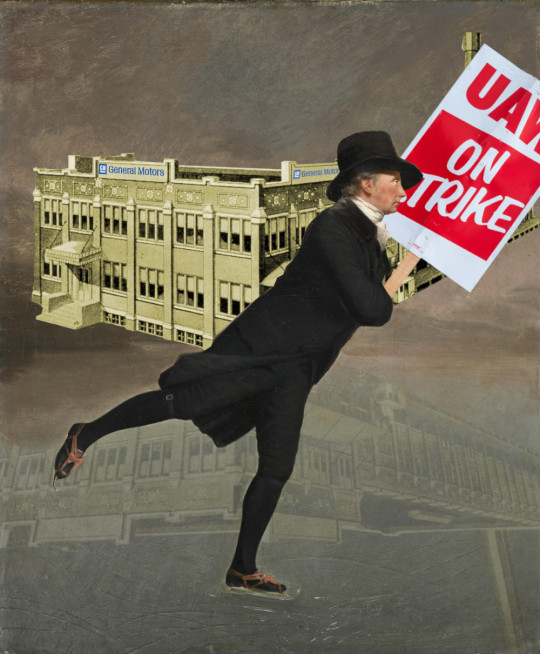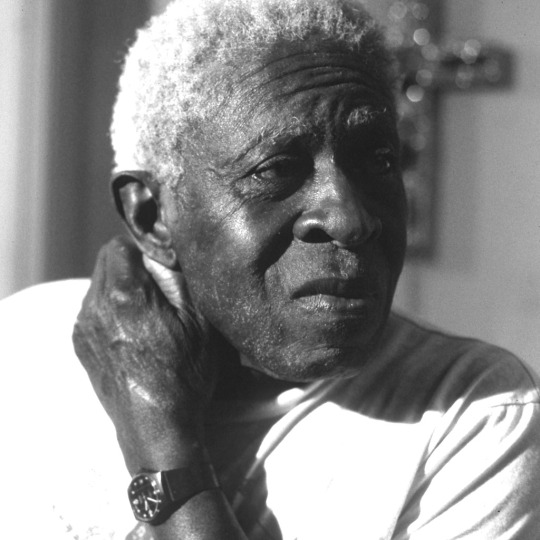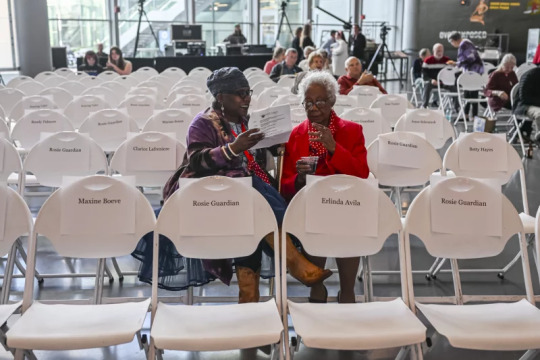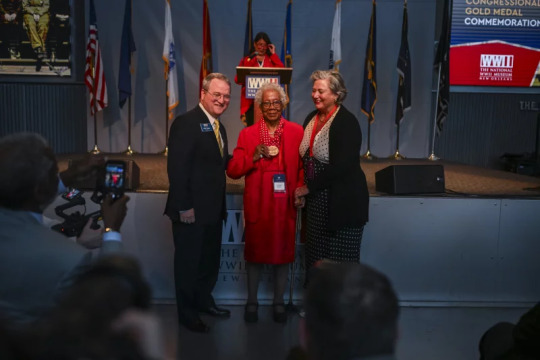#Alabama factory
Explore tagged Tumblr posts
Text

#cheetos are expensive in the Philippines#uhhh#granny goose nalang#tas replace alabama with mindanao#IT IS VERY CONSERVATIVE THERE#replace cheesecake factory with kori star's home#i feel so sigma!
0 notes
Text




Huntsville, AL
#travel#work trip#Alabama#we went down there to visit our factory and test stand#we got very close to our test engines and I was so nervous I was going to bump into something#it rained the whole time#I was absolutely not allowed to take pictures of anything#so here are some pictures from the hotel and the Space Museum where they host Space Camp
1 note
·
View note
Text
Ok y’all I’m back. I’m back at school, so if I continue doing pizza reviews it’ll be from around here, but actually while I’m typing this I remembered that we’re about to go on spring break so actually forget all I just said. Ok let’s get it
•Place? Pie Factory, Downtown Florence, AL
•Pizza? 10” “Pepperoni Classico” regular crust, and also cheese sticks again lollll
•Fav part? All of it. Y’all I ate this whole pizza in one sitting omg.
•How much did I spend? $20.41 ($9 for the pizza, and then the cheese sticks, drink, and a tip)
•Rating? 10/10. I hadn’t eaten alllll day before this and omg. It was literally so good. I am hesitant to rank something above Village in Athens but this just HIT. I wanna try the Lawrenceburg location too.

#college#pizza#pizzalover#pizza crust#localbusiness#florence Alabama#Florence#north alabama#alabama#pie factory
1 note
·
View note
Text
another showdown-of-the-former-alabama-QBs huh?
0 notes
Text
"Efficiency" left the Big Three vulnerable to smart UAW tactics

Tomorrow (September 22), I'm (virtually) presenting at the DIG Festival in Modena, Italy. Tomorrow night, I'll be in person at LA's Book Soup for the launch of Justin C Key's "The World Wasn’t Ready for You." On September 27, I'll be at Chevalier's Books in Los Angeles with Brian Merchant for a joint launch for my new book The Internet Con and his new book, Blood in the Machine.

It's been 143 days since the WGA went on strike against the Hollywood studios. While early tactical leaks from the studios had studio execs chortling and twirling their mustaches about writers caving once they started losing their homes, the strikers aren't wavering – they're still out there, pounding the picket lines, every weekday:
https://www.cnbc.com/2023/08/09/how-hollywood-writers-make-ends-meet-100-days-into-the-writers-guild-strike.html
The studios obviously need writers. That gleeful, anonymous studio exec who got such an obvious erotic charge at the thought of workers being rendered homeless as punishment for challenging his corporate power completely misread the room, and his comments didn't demoralize the writers. Instead, they inspired the actors to go on strike, too.
But how have the writers stayed out since May Day? How have the actors stayed out for 69 days since their strike started on Bastille Day? We can thank the studios for that! As it turns out, the studios have devoted so much energy to rendering creative workers as precarious as possible, hiring as little as they can getting away with and using punishing overtime as a substitute for adequate staffing that they've eliminated all the workers who can't survive on side-hustles and savings for six or seven months at a time.
But even for those layoff-hardened workers, long strikes are brutal, and of course, all the affiliated trades, from costumers to grips, are feeling the pain. The strike fund only goes so far, and non-striking, affected workers don't even get that. That's why I've been donating regularly to the Entertainment Community Fund, which helps all affected workers out with cash transfers (I just gave them another $500):
https://secure2.convio.net/afa/site/Donation2?df_id=8117&8117.donation=form1&mfc_pref=T
As hot labor summer is revealed as a turning point – not just a season – long strikes will become the norm. Bosses still don't believe in worker power, and until they get their minds right, they're going to keep on trying to starve their workforces back inside. To get a sense of how long workers will have to hold out, just consider the Warrior Met strike, where Alabama coal-miners stayed out for 23 months:
https://www.thenation.com/article/activism/warrior-met-strike-union/
As Kim Kelly explained to Adam Conover in the latest Factually podcast, the Alabama coal strikers didn't get anywhere near the attention that the Hollywood strikers have enjoyed:
https://www.youtube.com/watch?v=UvyMHf7Yg0Q
(To learn more about the untold story of worker organizing, from prison unions to the key role that people of color and women played in labor history, check out Kelly's book, "Fight Like Hell," now in paperback:)
https://www.simonandschuster.com/books/Fight-Like-Hell/Kim-Kelly/9781982171063
Which brings me to the UAW strike. This is an historic strike, the first time that the UAW has struck all of the Big Three automakers at once. Past autoworkers' strikes have marked turning points for all American workers. The 1945/46 GM strike established employers' duty to cover worker pensions, health care, and cost of living allowances. The GM strike created the American middle-class:
https://prospect.org/labor/2023-09-18-uaw-strikes-built-american-middle-class/
The Big Three are fighting for all the marbles here. They are refusing to allow unions to organize EV factories. Given that no more internal combustion cars will be in production in just a few short years, that's tantamount to eliminating auto unions altogether. The automakers are flush with cash, including billions in public subsidies from multiple bailouts, along with billions more from greedflation price-gouging. A long siege is inevitable, as the decimillionaires running these companies earn their pay by starving out their workers:
https://www.businessinsider.com/general-motors-ceo-mary-barra-salary-auto-workers-strike-uaw-2023-9
The UAW knows this, of course, and their new leadership – helmed by the union's radical president Shawn Fain – has a plan. UAW workers are engaged in tactical striking, shutting down key parts of the supply chain on a rolling basis, making the 90-day strike fund stretch much farther:
https://prospect.org/blogs-and-newsletters/tap/2023-09-18-labors-militant-creativity/
In this project, they are greatly aided by Big Car's own relentless pursuit of profit. The automakers – like every monopolized, financialized sector – have stripped all the buffers and slack out of their operations. Inventory on hand is kept to a bare minimum. Inputs are sourced from the cheapest bidder, and they're brought to the factory by the lowest-cost option. Resiliency – spare parts, backup machinery – is forever at war with profits, and profits have won and won and won, leaving auto production in a brittle, and easily shattered state.
This is especially true for staffing. Automakers are violently allergic to hiring workers, because new workers get benefits and workplace protection. Instead, the car companies routinely offer "voluntary" overtime to their existing workforce. By refusing this overtime, workers can kneecap production, without striking.
Enter "Eight and Skate," a campaign among UAW workers to clock out after their eight hour shift. As Keith Brower Brown writes for Labor Notes, the UAW organizers are telling workers that "It’s crossing an unofficial picket line to work overtime. It’s helping out the company":
https://labornotes.org/2023/09/work-extra-during-strike-auto-workers-say-eight-and-skate
Eight and Skate has already started to work; the Buffalo Ford plant can no longer run its normal weekend shifts because workers are refusing to put in voluntary overtime. Of course, bosses will strike back: the next step will be forced overtime, which will lead to the unsafe conditions that unionized workers are contractually obliged to call paid work-stoppages over, shutting down operations without touching the strike fund.
What's more, car bosses can't just halt safety stoppages or change the rules on overtime; per the UAW's last contract, bosses are required to bargain on changes to overtime rules:
https://uaw.org/wp-content/uploads/2023/09/Working-Without-Contract-FAQ-FINAL-2.pdf
Car bosses have become lazily dependent on overtime. At GM's "highly profitable" SUV factory in Arlington, TX, normal production runs a six-days, 24 hours per day. Workers typically work five eight-hour days and nine hours on Saturdays. That's been the status quo for 11 years, but when bosses circulated the usual overtime signup sheet last week, every worker wrote "a big fat NO" next to their names.
Writing for The American Prospect, David Dayen points out that this overtime addiction puts a new complexion on the much-hyped workerpocalypse that EVs will supposedly bring about. EVs are much simpler to build than conventional cars, the argument goes, so a US transition to EVs will throw many autoworkers out of work:
https://prospect.org/labor/2023-09-20-big-threes-labor-shortages-uaw/
But the reality is that most autoworkers are doing one and a half jobs already. Reducing the "workforce" by a third could leave all these workers with their existing jobs, and the 40-hour workweek that their forebears fought for at GM inn 1945/46. Add to that the additional workers needed to make batteries, build and maintain charging infrastructure, and so on, and there's no reason to think that EVs will weaken autoworker power.
And as Dayen points out, this overtime addiction isn't limited to cars. It's also endemic to the entertainment industry, where writers' "mini rooms" and other forms of chronic understaffing are used to keep workforces at a skeleton crew, even when the overtime costs more than hiring new workers.
Bosses call themselves job creators, but they have a relentless drive to destroy jobs. If there's one thing bosses hate, it's paying workers – hence all the hype about AI and automation. The stories about looming AI-driven mass unemployment are fairy tales, but they're tailor made for financiers who get alarming, life-threatening priapism at the though of firing us all and replacing us with shell-scripts:
https://pluralistic.net/2023/03/09/autocomplete-worshippers/#the-real-ai-was-the-corporations-that-we-fought-along-the-way
This is why Republican "workerism" rings so hollow. Trump's GOP talks a big game about protecting "workers" (by which they mean anglo men) from immigrants and "woke captialism," but they have nothing to say about protecting workers from bosses and bankers who see every dime a worker gets as misappropriated from their dividend.
Unsurprisingly, conservative message-discipline sucks. As Luke Savage writes in Jacobin, for every mealymouthed Josh Hawley mouthing talking points that "support workers" by blaming China and Joe Biden for the Big Three's greed, there's a Tim Scott, saying the quiet part aloud:
https://jacobin.com/2023/09/republicans-uaw-strike-hawley-trump-scott/
Quoth Senator Scott: "I think Ronald Reagan gave us a great example when federal employees decided they were going to strike. He said, you strike, you’re fired. Simple concept to me. To the extent that we can use that once again, absolutely":
https://twitter.com/American_Bridge/status/1704136706574741988
The GOP's workerism is a tissue-thin fake. They can never and will never support real worker power. That creates an opportunity for Biden and Democrats to seize:
https://pluralistic.net/2023/09/18/co-determination/#now-make-me-do-it
Reversing two generations of anti-worker politics is a marathon, not a sprint. The strikes are going to run for months, even years. Every worker will be called upon to support their striking siblings, every day. We can do it. Solidarity now. Solidarity forever.



If you'd like an essay-formatted version of this post to read or share, here's a link to it on pluralistic.net, my surveillance-free, ad-free, tracker-free blog:
https://pluralistic.net/2023/09/21/eight-and-skate/#strike-to-rule
4K notes
·
View notes
Note
Idk if you’ve got any ideas or backstory for Alastor’s sisters, but I love the designs for them and have kind of taken some ideas about them and ran with it, mostly about the eldest, Adeline, though:
�� Adelice was definitely a protector of the whole bunch. Alastor helped protect the younger sisters and worried a lot about his older sister, but Adelice would make a target out of herself to make sure the younger kids faced as little of their father’s bad days as possible.
• Leonore and Bertilda (the younger two) still experience a lot of the family drama, but it’s a little less than what their older siblings do since they try to keep them out of the fire, so while the older two seem to mature way too quickly, the younger two stay kids for a bit longer. This, however does piss off their father, who takes every moment to ridicule them on their inability to act like their older siblings when their older siblings aren’t able to keep them out of the fire.
• Adelice also gives off Tiana from Princess and the Frog vibes. She’s got a Dream and she’s gonna work hard every day to make it happen.
• Alastor Worries™️ and thinks she’s pushing herself too much, taking on the brunt of their father’s anger, taking on so many jobs, and trying to get as much of an education as she can for as cheap as she can get it. So he becomes her Distraction, constantly dragging her off to parties and out drinking and listening to music. Anything to get her to chill tf out.
• He’s also a hypocrite though, considering he takes on a ton of “side jobs” by the time he’s 15 before he starts working in radio to try to help out their maman. He somehow manages to get all the fun jobs though. She’s out here working in restaurants and factories and he’s playing piano at the speakeasy and working at a nearby gator farm during the summers. And even the jobs that shouldn’t be fun, he manages to turn into a blast, like apprenticing at the butchers or working the graveyard shift at the cemetery. He thinks he’s so damn funny, while his bosses low-key wanna strangle him. This somehow makes him more likable as a radio host.
• Eventually, Adelice manages to find herself a nice, rich, Creole man who she and Alastor run through the wringer trying to test just how wholesome of a man he is before she’ll accept his hand in marriage. This man is confused, but he is dead set on winning her heart. He offers her the money to achieve her dream, he offers her the happy and stress-free life that New Orleans won’t afford her, he offers a life where she’s free and not trapped by anybody, himself included, and most importantly, he offers to take her whole family away from their father and the impoverished life that keeps them with him.
• Their maman can’t fathom a life without her husband, but she can see why they’d want to leave.
• Alastor doesn’t want to lose his sisters, but he knows someone has to watch out for their maman and he’s far to attached to New Orleans to leave it now.
• Before all his sisters leave, Adelice jokingly says she’s gonna name a son after him and he politely declines the offer.
• They move to Alabama or something and he never sees them again, but Adelice has a bunch of happy children that she loves who know all about him :)
• Bertilda also gets married, but Bertilda and her husband find themselves unable to have kids so they adopt a cute little red-headed girl and her green-eyed little brother.
• Leonore dates a lot of people before she finds the perfect gal for her and they move in together as “friends.” Their maman was a bit progressive in some ways and taught them not to judge, where most others would do when Adelice and Bertilda don’t make a big deal out of it when they find out about it.
• All three of them keep an eye on the news regarding New Orleans and whatever can be said about their famous radio host brother from far away.
• The only times the lot of them return to New Orleans is when they hear about Alastor’s death and their maman’s death.
I've talked briefly about them in this ask :3 And I really enjoyed reading your version of their story. It seems more wholesome compared to what I have in mind for them (like Adelice definitely won in this one) XD
130 notes
·
View notes
Text
criminal minds case concept/idea for drs
bc @cyb3rl0v asked. @iamsoldierpoetandking
the post

------------------------------------------------------------------------------
date: June 17 2025.
started: 12:28am. ended: 2:22
i'm not gonna make it very aesthetic bc yeah. anyway. i'm doing this on my phone so it's probably gonna be ugly
------------------------------------------------------------------------------

WARNINGS. psychological torture, death game, mentions of death, suicide and kidnapping. 🤷 this is criminal minds idk what you're expecting.
this idea was created by me, as well as the characters i'll mention. so if you use it just @ me. but you're free to use it just like any of my other ideas as long as I get credit. I worked on this earlier today in the car so it may be a bit messy. also I'm very indecisive so of anything isn't all matching it's bc I changed stuff while working on it and was too lazy to fix it. so
inspirations: alice in borderline, alice in wonderland, rafscrap's chorus battles A-L1, A-L2, A-L3.
episode concept: "The Gauntlet"
the case overview
case name: The Wonderland Games
location: abandoned textile factory, outskirts of Mobile, Alabama
victims: 50 young adults (ages 19-25), organized into 25 pairs
survivors: 14 individuals (7 pairs)
duration: 72 hours

the game
50 kidnapped individuals (25 groups of 2) wake up inside an abandoned multi-story warehouse-turned-kill-labyrinth.
each group is fitted with collars — either explosive or injective (with paralytics or toxins), synced to one another. if your partner dies, you die, now or later.
objective: make it through a series of trials. Only 5–7 groups can survive. no one knows how many groups there are, or what the exact end is.
the teams
each team is based on a Wonderland character motif — it reflects their dynamic or design (either ironically or truthfully).
the factory was converted into a multi-level maze with themed rooms representing different Alice in Wonderland scenes. each pair was assigned a Wonderland character identity and given weapons that ironically contrasted their backgrounds or beliefs.
some teams if one is injured they mercy kill or have a mutual sucide because they're gonna die anyway (I got nothing.)
structure
the factory was divided into five main levels, each representing a scene from Alice in Wonderland. the UnSubs monitored everything through hidden cameras, live-streaming to paying customers on the dark web while collecting psychological data on extreme stress responses.
each pair was given a Wonderland identity and color-coded bracelets that couldn't be removed:
- Alice (White) - amadrya & vincent: the main victims being followed throughout the episode(s)

the BAU gets involved
a livestream link is sent anonymously to local police and federal authorities. It’s disturbing — live footage of two terrified young adults in a bloody warehouse.
so far, four similar videos have been leaked in the last 72 hours. At least three confirmed dead.
BAU is called in when the fourth stream features a local college student whose parents had reported her missing two days ago.
Initial theory: black market red-room content, or a psychopathic cult-like game.
the UnSub profiles (BAU)
victims share age range: 19–25. varied backgrounds, but many are college-aged, socially active online, and had some level of recent mental or emotional stress.
garcia finds they were all lured or manipulated to disappear willingly — a "party," “escape room challenge,” “audition,” etc.
the team starts suspecting an inner circle of recruiters — not all players are random targets; someone they trust got them into this.
some rooms involve psychological riddles, others involve moral choices (“You can save your partner if you agree to lose a finger” — that kind of thing).
the UnSubs
primary UnSub - "The Mad Hatter"
dr. markus roberts, 45, former child psychologist who lost his license after unethical experiments on minors. Brilliant but deeply disturbed, he orchestrated the psychological framework of the games. his obsession with Alice in Wonderland stemmed from his belief that only through extreme trauma could people achieve "true clarity" - his twisted interpretation of Alice's journey through Wonderland.
secondary UnSub - "The Queen of Hearts"
rebecca shields, 38, former military logistics coordinator with expertise in surveillance and tactical operations. she handled the technical aspects: cameras, building security, victim transport. her military background made her ruthlessly efficient at the operational side.
tertiary UnSub - "The White Rabbit"
yes I looked up a different way to say third and that came up.
david chen, 32, a tech entrepreneur whose social media company went bankrupt. he managed the live streams, sold access to wealthy buyers on the dark web, and recruited the "betrayers" through financial manipulation and blackmail.

live stream & audience
- average of 2,000-5,000 concurrent viewers paying $500+ per hour of access
- betting pools on individual survivors and pairs
- private chat rooms where viewers request specific challenges
- total revenue exceeded $2 million over 72 hours
- viewers could "sponsor" weapons or challenges for additional fees
audience psychology
the BAU's analysis revealed viewers fell into three categories:
1. thrill seekers: wealthy individuals seeking extreme entertainment
2. sadists: people who enjoyed watching others suffer
3. gamblers: high-stakes betting on outcomes
technical infrastructure
- professional-grade streaming equipment with multiple camera angles
- encrypted servers in multiple countries
- cryptocurrency payment systems to avoid detection
- backup systems to prevent interruption

the games
FLOOR 1: "DOWN THE RABBIT HOLE"
(25 pairs → 22 pairs survive)
duration: 6 hours
each pair wakes up in identical 8x8 concrete rooms with their assigned weapons and character names. the rooms are soundproof but equipped with cameras and speakers. a riddle appears on the TV screen that can only be answered through inflicting harm.
sample riddles:
- "to find the key that sets you free, one must bleed for all to see. The deeper the cut, the clearer the way, but hesitate too long and here you'll stay."
- "trust is earned through sacrifice shared. Show your bond through flesh that's bared. only when both have paid the price, will you roll the loaded dice."
weapons by character assignment:
- Alice & Knight (Amadrya & Vincent): sharpened cross & dull knife
- Mad Hatter & March Hare: broken teacup shards & wooden mallet
- Cheshire Cat & White Rabbit: razor wire & pocket watch with sharp edges
- Queen of Hearts & King of Hearts: playing cards with sharpened edges & decorative scepter
- Tweedledee & Tweedledum: identical curved daggers
- Caterpillar & Dormouse: hookah pipe (metal) & letter opener
- Red Queen & White Queen: chess pieces (sharpened) & mirror shards
FLOOR 2: "THE POOL OF TEARS"
(22 pairs → 18 pairs survive)
duration: 8 hours
the surviving pairs are released onto a flooded floor where the water level varies from ankle-deep to chest-deep. they're handcuffed together and must navigate through a maze of rooms, some containing other pairs. each room has only one exit key, but multiple pairs may enter.
Room Types:
- drowning chambers: water level rises every 10 minutes. pairs must find the key before the room fills completely.
- current rooms: strong artificial currents try to separate the handcuffed pairs. if the chain breaks, both die.
- choice chambers: two pairs enter, but only one key. they must decide who lives.
- trust falls: one partner must go underwater to retrieve a key while the other holds them up. if trust fails, both drown.
psychological elements:
- speakers play distorted children's lullabies underwater
- floating objects include photos of the victims' families
- some rooms have false floors that give way unexpectedly
- mock rescue scenarios where voices call for help from sealed rooms
FLOOR 3: "THE MAD TEA PARTY"
(18 pairs → 12 pairs survive)
duration: 4 hours
all remaining pairs are brought into a large dining hall with an elaborate tea party setup. the room has 18 chairs around a massive table, but only enough food and water for 12 people. a giant clock on the wall counts down from 4 hours.
the rules:
- food and water are distributed around the table
- pairs must remain seated until the timer runs out
- if anyone stands or leaves their chair, poisonous gas fills the room
- the catch: there are only 12 portions, and everyone can see exactly what's available
psychological torture:
- the food is elaborate: roast beef, fresh bread, clean water, fruit - the first real sustenance in 24+ hours
- place cards with victims' real names and photos of their families
- speakers play recordings of loved ones asking them to "come home safe"
- some food is visibly poisoned (marked with skull symbols), creating doubt about all food
The Breakdown:
- hours 1-2: Tense standoff, pairs whispering, planning
- hour 3: First violence erupts when the "Mad Hatter" pair tries to take food from the "Caterpillar" pair
- hour 4: all-out brawl as starvation and desperation take over
I redid 4 because I didn't like it so if the format is different it's bc I didn't look at the other ones and just yapped. I'm tired now so I'm done.
FLOOR 4: "THE QUEEN'S CROQUET GROUND"
(12 pairs → 8 pairs survive)
duration: 16 hours
the surviving pairs enter a twisted maze designed like a croquet court, with high hedgerows creating narrow corridors and dead ends. unlike previous challenges, this is a psychological game of cat and mouse where pairs must navigate through "wickets" while avoiding or confronting each other. everyone keeps their original weapons - no upgrades, no additional tools.
Arena Layout:
- massive hedge maze with 15-foot walls
- nine "wickets" positioned throughout that must be passed through in sequence
- each wicket can only be used by one pair - once passed through, it seals behind them
- central "Queen's Court" area where multiple paths converge
- dead ends contain essential supplies (food, water, medical supplies) but create traps
The Croquet Rules:
- pairs must pass through all nine wickets in the correct sequence (marked with playing card suits)
- only one pair can use each wicket - it permanently seals after passage
- if a pair encounters another pair at a wicket, they must "duel" for the right to pass
- pairs can choose to go around blocked wickets, but this adds hours to their journey
- the first pair to complete all nine wickets and reach the exit wins food, water, and 8 hours of guaranteed rest
The Psychological Trap:
the maze is designed to force confrontations. multiple paths lead to the same wickets, and the hedge walls amplify sound - you can hear other pairs approaching but can't see them until you're face-to-face. the scarcity of resources and the one-way wicket system creates desperation.
Maze Elements:
- speakers hidden in hedges play whispered excerpts from victims' betrayers: "She was always too trusting... I had to do it... they said they'd kill my sister..."
- mirrors embedded in hedge walls at turns, forcing victims to see their deteriorating state
- some paths lead to alcoves with photos of victims' families and recordings of loved ones pleading for them to come home
- false wickets that lead nowhere, wasting precious time and energy
- the hedge maze shifts - some passages close or open randomly, separating pairs
Vincent and Amadrya's Navigation:
they use Amadrya's pattern recognition to map the maze and avoid other pairs initially. vincent's protective instincts keep them moving efficiently. they encounter Marcus and Jenna (the "Dormouse & Caterpillar" pair) at the seventh wicket after 12 hours of navigating.
The Confrontation:
Marcus and Jenna have been in the maze longer and are more desperate. they've been surviving on minimal water and no food. when they see Vincent and Amadrya approaching the seventh wicket:
"You think you're so smart, don't you?" Jenna snarls, exhausted and desperate. "Always one step ahead, always surviving. Well, this wicket is ours."
I love descriptive words (end me). I'm better at writing essays and things than dialogue.
the fight happens in the narrow corridor leading to the wicket. there's no room to maneuver, no escape route. It's brutal, desperate, and exactly what Vincent and Amadrya had been trying to avoid.
eliminations:
- two pairs die from dehydration after getting lost in false passages
- one pair eliminates another in a wicket confrontation but both partners are mortally wounded and die before reaching the exit
- Marcus and Jenna are killed by Vincent and Amadrya in the encounter described
- the remaining eight pairs (including Vincent and Amadrya) are too exhausted to continue fighting effectively
The Aftermath:
by the time the surviving pairs reach the final wickets, they're moving like zombies. the maze has broken them psychologically - they've heard each other's most intimate betrayals, seen themselves become killers, and lost all sense of time and direction. the hedge walls seem to close in, and several survivors show signs of severe claustrophobia and panic attacks.
FLOOR 5: "THE FINAL JUDGMENT"
(8 pairs → ? pairs intended to survive)
duration: Indefinite
the final room is a circular colosseum-style arena with tiered seating (empty, but cameras everywhere for the live stream audience). weapons line the walls - everything from the previous challenges plus new options like crossbows, swords, and maces.
The Final Rule:
"Only one pair may leave Wonderland. Prove you deserve to return to the real world."
What Actually Happens:
by this point, all survivors have been awake for 48+ hours with minimal food and water. they're running on pure adrenaline and survival instinct, but their bodies are shutting down. when they enter the final room, instead of fighting, they simply... stop.
the standoff:
- Amadrya can barely stand; Vincent holds her upright
- other pairs lean against walls or sit on the ground
- no one picks up weapons
- some survivors are crying, others stare blankly
- the silence stretches for over an hour
UnSub reaction:
the UnSubs expected a final battle royale for their paying audience. the passive resistance isn't part of the plan. they begin pumping in stimulants through the air system.
breaking point:
just as the UnSubs are about to flood the room with adrenaline-inducing drugs to force violence, the BAU breaches the facility.

the main victims being followed
amadrya tavens - ALICE
- age: 19
- height: 5'6
- nationality: american (greek-native american)
- occupation: dancer
- betrayal: stabbed by her friend after being led away during a party
- her weapon: a cross with a sharpened tip. amadrya is pagan, not Christian (ex- Christian due to religious trauma.)
I'm not hating on christians. I used to be one myself. People with religious trauma exist
seen as the "reluctant heroine" — calculating, quiet, and observant.
Initial reactions: silent fear masked by cold logic. tries to find puzzles or clues instead of violence.
her guilt trigger: she was betrayed by someone close. Religious trauma complicates her morality.
first kill triggers her spiraling — she dissociates, tries to make sense of it through rules, logic, pattern recognition.
in later rooms, she becomes the one who executes hard choices if Vincent hesitates.
lee vincent - THE KNIGHT
- age: 19
- height: 5'6
- nationality: american (korean-white. wasian)
- occupation: mechanic
- betrayal: held underwater by his friend but not killed. he was knocked unconscious.
- his weapon: a dull blade
Initially takes on protector role — logical, practical, emotionally detached.
but it’s Amadrya that keeps him grounded.
moment of humanity: after their second kill, he notices Amadrya’s hands shaking and physically grounds her (hand on shoulder, forehead to hers, soft-spoken).
his inner wound: He feels disposable — betrayed by a close friend. now he's clinging to survival not for himself, but because Amadrya needs someone who stays.
The "Alice" Theme:
they're navigating a twisted wonderland where logic is warped, but Amadrya's pattern recognition helps decode the madness while Vincent keeps her grounded in brutal reality.
#reyaint#reality shifting#shiftblr#reality shifter#shifting#shifting community#shifting motivation#anti shifters dni#criminal minds shifting#criminal minds dr#criminalminds
21 notes
·
View notes
Text

WTH House. This is the most bizarre conversion I've ever seen. It's a 1910 former school that was later used as a Levi jeans factory in the 60s. The current owners turned it into a home in New Market, Alabama. 6bds, 4ba, $915K. You gotta see this one.

The entry hall still looks like a long school house layout.

And, this is the sitting room

Pay special attention to the fireplaces. The firebox on this one looks like the entrance to another dimension. Where did they get such fancy carved mantels?

The dining room. With the checkered floors, it kind of gives Alice in Wonderland vibes.


Somebody had a vision when converting this house. Total elegance.

Look at the mural in the kitchen. It looks like they spent a lot of money on this conversion. The exhaust hood is so high and open. I wouldn't want to climb up there and reach inside for the filter.


The marble floors in this home. Here's another sitting room with niches for life size statues, stained glass windows, a tray ceiling painted with clouds and an ornately carved fireplace.

I've never seen fireplaces with high hearths and an opening in the middle like this.


Interesting bathroom. What is that tarnished bowl on the floor?

The halls are definitely long school halls.

This room is like an office.

Is that a fish tank in the fireplace? I don't understand the loose stones scattered on the floor.

Large marble shower with a vintage corner china cabinet.

Interesting bedroom setup.

Looks like the primary bedroom.

I thought that this was a guest house.

But, it's just one big room.

This is just weird.

Very large porch with Greek columns, and a path to a round patio with an elaborate fountain.

Statuary and murky water dot the property.

A lacy gazebo.


More statuary.

There's a lot of land- the lot is 5 acres.
203 notes
·
View notes
Text


Looking at the cover art and title, you’d think maybe one idea about America—good or bad—might factor into American Heart in some way, especially because Boone referenced Springsteen as a touchpoint for this album.
But these songs are American insofar as they do not evoke a specific time or place and have nothing really to say, so they are just hegemonically American by default.
When Boone sings on the title track—a song about a near-death experience in a car crash when he was a teenager—repeatedly about his “American heart,” there’s none of the ironic distance of “Born in the U.S.A.” or even the national pride of “Sweet Home Alabama.” Boone is just a 22-year-old from Monroe, Washington, and, thus, American, who has a heart.
For a guy who told Rolling Stone he doesn’t “want to rely on my physical form to be the primary driver of my shows,” it’s interesting that he’s here on the cover, abs chiseled from marble, seemingly having just rescued the American flag from a big fire at the symbolism factory.
Boone struggles to sound like anyone other than Harry Styles, a more charismatic showman from across the pond whose preexistence calls into question the whole Benson Boone project in the first place.
Most of Boone’s album makes me appreciate the relatively cool and confident pop music of his peers. Each song on American Heart is just an empty lunchbox with a few crumbs left by his betters. His “I Wanna Be the One You Call” is a swipe at Styles’ “As It Was,” only performed by someone dripping with flop sweat.
At least the Sabrina Carpenter experience comes with a legible persona and bawdy wit—Boone’s attempt at a poolside summer jam with “Mystical Magical” feels best suited to middle school sleepovers.
Instead of a musical or narrative point of view, Boone relies on speaking his truth, a songwriting axiom that doesn’t take into account whether someone’s truth is fundamentally boring or has been rendered in pop music countless times before.
So you get Boone, clearly someone cramming a big personality into a tight-fitting jumpsuit, singing mawkish tunes about how much he loves his mom and admires his dad.
There’s nothing here that says Boone is ready to enter the pantheon of the real showmen, no more than the thousands of other guys singing, dancing, and backflipping for you on Instagram Reels.
Full review
13 notes
·
View notes
Text






Mose Tolliver (1918/20 - 2006, American artist) was born one of 12 children to sharecroppers Ike and Laney Tolliver in the Pike Road community, near Montgomery, Alabama. His exact year of birth is unknown, though it is known he was born on the Fourth of July as well as between the years 1920–25. He attended school only until the third grade due to a self-described lack of interest in education. In the 1930s, the family moved to Montgomery, Alabama where he helped support his parents and their large family by doing odd jobs.
In the early 1940s he married his childhood friend, Willie Mae Thomas, and had 13 children, 11 of whom survived to adulthood. During the late 1960s, while working at McLendon's furniture factory, he had a severe injury where his legs were crushed when a half-ton load of marble shifted and fell from a forklift as he was sweeping in the furniture factory. After this incident, he turned to painting to combat boredom, pain and long hours of idle time. Although many say that his career started after the accident, Tolliver claims he painted beforehand. He would often turn his paintings upside-down and paint the picture of perhaps an animal and landscape positioned from various directions. Tolliver's titles are wildly divergent; e.g., "Smoke Charlies," "Scopper Bugs," or "Jick Jack Suzy Satisfying her own Self".
On October 30, 2006, Tolliver died from pneumonia in Montgomery, Alabama.
107 notes
·
View notes
Text
lmao America's credit officially downgraded everywhere! Are we winning, MAGA? Financially fucked forever, and the Republicans are about to make the deficit even worse just to avoid taxing billionaires.
As a reminder, during what these people hold up as America's "Golden Age" --the 1950s--the rich were taxed faaaaar more than they are taxed now. (And America used the money to build infrastructure and create powerful institutions, thus further enriching the country.) And you know what? The rich still stayed rich. Didn't hurt them a bit.
But now? Mass layoffs for federal workers, broke farmers, cuts (sorry, "reforms") to Medicaid and an unusable Social Security system, high tariffs (consumer tax) on nearly everything, small businesses destroyed from that and the financial insecurity, ports slow which means shipping slow (which means more layoffs), costs of items going up means people spending less, hostile borders and the President insulting all of our allies means less tourism dollars, and oh, DHS is spending wildly with no oversight or real budget and Trump wants a big parade so he can play soldiers and a secondhand airplane that the Qatari dumped on his gullible ass and taxpayers are supposed to foot the billion dollar retrofit bill.
OH, and I forgot to mention the cuts to research programs which created jobs, especially in red states like Alabama. Too bad for Alabama I guess. Oh and no FEMA with hurricane season approaching.
And now, NOW, America as a nation no longer has reliable credit with the rest of the world.
Some are going to argue, but the stock market is up! --and forget the bond market is wobbling. And that rich people do not save the economy with their billions. They hang onto their billions. There is no trickle down.
Others will argue that the tariffs will make long-term gains! --and forget that no one is planning on bringing those industries here. In fact, some companies, like John Deere, are just moving away from the US altogether. No one has even started building factories here and even if they did, it would take years to be operational.
And if you look closely at the magic math on that Republican reconciliation bill, you will notice that in the long term, if you don't make waaaay more money per year than you think, you get no tax benefits at all. In fact, you might end up paying more long term.
B..B...But his prescription drug costs EO means those costs will go down!! --And no, they won't with it as it stands for several reasons. (EOs aren't law and the companies will challenge it. Each state and country has its own laws etc etc) But none of that matters because, if you don't have access to medical care because Republicans cut Medicaid and Medicare and your state cannot afford to continue the marketplace (*cough* red states*cough), you can't afford to see a doctor to get a prescription anyway.
But don't worry, our head of HHS just swam in sewage and believes in vitamins over medication, so I am sure things will be fine with your health.
ARE WE GREAT YET?
And look, I get on some level that a lot of aggrieved people wanted a chance to get "revenge" on their perceived enemies. But the immigrant, here legally or not, wasn't the one making your health care expensive or raising your rent. The less than ten trans college athletes weren't the ones taking your jobs overseas (to a more exploitable labor market). And doctors can suck! We all know that well! But the doctor wanting your child to be vaccinated isn't your "Big Pharma" enemy--that would actually be the pharmaceutical companies who make the prices so high in the first place.
Anyway, America is financially fucked now. But the billionaires are fine, which is all that matters, I guess.
#maga#and they can look up any of this evidence#but they won't#it's easier to ignore it than to look at the problem
10 notes
·
View notes
Text
Debbie Elliott for NPR's Weekend Edition Sunday:

Susan Taylor King, right, a Rosie, sits with her daughter, Kididi Ajanku, before a ceremony at the National World Ward II Museum. Ajanku says her mom is a living legacy. Emily Kask/NPR
Rosie the Riveters honored for service in WWII
And now for some good news:
"NEW ORLEANS – A hero's welcome greets 18 women at the National World War Two Museum. Staff and museum visitors line a plaza, waving American flags and cheering as the women arrive, adorned in the red and white polka dot scarfs that are a signature of Rosie the Riveters.
They're here to be honored as Congressional Gold Medal recipients. But first, each Rosie gets a personal tour of the museum, starting in the home front exhibit.
'Look at the women welders, now that's a familiar job,' says Jane Tucker, now 97. She left rural Lineville, Alabama in 1943, with her mom and sister to work in a shipyard. ...
'Rosie has come to stand for an image of empowerment,' says Kimberly Guise, senior curator at the National World War Two Museum. 'A symbol of strength and can-do spirit.'
Guise says after the war, women were generally forced out of the workforce when service members returned home. But what they did changed the labor landscape. ...

"Rosie" Susan Taylor King says working in an aircraft factory in Baltimore during the war broke down the barriers of segregation. Emily Kask/for NPR
'I think it was the first time in my life that we could go in a dining hall, eat with everybody because they could not segregate against us when we worked on the federal jobs,' [King] recalls.
King, now 100 years old, says it took years for her to realize the role she played in American history."
Full story
Celebrate the achievement, however belated, before someone decides there's something wrong with recognizing women's efforts.
11 notes
·
View notes
Text
If you want to see what the GOP has in store for the rest of America, visit the Old South
Thom Hartmann
June 27, 2024 5:42AM ET

Photo by Miltiadis Fragkidis on Unsplash
Today is the first Biden-Trump debate and many Americans are wondering how each will articulate their ideas for the future of America.
Republicans have a very specific economic vision for the future of our country, although they rarely talk about it in plain language: they want to make the rest of America look and function just like Mississippi. Including the racism: that’s a feature, not a bug.
It’s called the “Southern Economic Development Model” (SEDM) and has been at the core of GOP economic strategy ever since the days of Ronald Reagan. While they don’t use those words to describe their plan, and neither did the authors of Project 2025, this model is foundational to conservative economic theory and has been since the days of slavery.
The SEDM explicitly works to:
— Maintain a permanent economic underclass of people living on the edge of poverty, — Rigidify racial and gender barriers to class mobility to lock in women and people of color, — Provide a low-cost labor force to employers,
— Prevent unions or any other advocates for workers’ rights to function, — Shift the tax burden to the working poor and what’s left of the middle class while keeping taxes on the morbidly rich extremely low, — Protect the privileges, power, and wealth of the (mostly white and male) economic overclass, — Ghettoize public education and raise the cost of college to make social and economic mobility difficult, — Empower and subsidize churches to take over public welfare functions like food, housing, and care for indigent people, — Allow corporations to increase profits by dumping their waste products into the air and water, — Subsidize those industries that financially support the political power structure, and, — Heavily use actual slave labor.
For hardcore policy wonks, the Economic Policy Institute(EPI) did a deep dive into the SEDM last month: here’s how it works in summary.
Republicans claim that by offering low-cost non-union labor and little to no regulatory oversight to massive corporations, they’re able to “attract business to the region.” This, they promise, will cause (paraphrasing President Kennedy out of context) “a rising tide that lifts all boats.”
Somehow, though, the only people who own boats that rise are those of the business owners and senior executives. The permanent economic underclass is key to maintaining this system with its roots in the old plantation system; that’s why Mississippi, Louisiana, Alabama, Tennessee, and South Carolina have no minimum wage, Georgia’s is $5.15/hour, and most other GOP states use the federal minimum wage of $7.25/hour and $2.13/hour for tipped workers.
It’s thus no coincidence that ten out of the 20 Republican-run states that only use the federal minimum wage are in the Old South.
Anti-union or “right to work for less” efforts and laws are another key to the SEDM; the failed unionization effort last month at the Alabama Mercedes factory was a key victory for the GOP. Unions, after all, balance the power relationship between management and workers; promote higher wages and benefits; support workplace and product safety regulations; advance racial and gender equality; boost social mobility; and have historically been the most effective force for creating a healthy middle class.
Unionization, however, is antithetical to creating and maintaining a permanent economic underclass, which is why, as EPI notes, “while union coverage rates stand at 11.2% nationally, rates in 2023 were as low as 3.0% in South Carolina, 3.3% in North Carolina, 5.2% in Louisiana, and 5.4% in Texas and Georgia.”
Unions also make wage theft more difficult, essentially forcing government to defend workers who’ve been ripped off by their employers. That’s why Florida doesn’t even have a Department of Labor (it was dismantled by Republican Governor Jeb Bush in 2002), and the DOLs in Alabama, Delaware, Georgia, Louisiana, Mississippi, and South Carolina no longer bother to enforce wage theft laws or recover stolen money for workers.
Another key to the SEDM is to end regulation of corporate “externalities,” a fancy word for the pollution that most governments in the developed world require corporations to pay to prevent or clean up. “Cancer Alley” is probably the most famous example of this at work: that stretch from west Texas to New Orleans has more than 200 refineries and chemical plants pouring poison into the air resulting in downwind communities having a 7 to 21 times greater exposure to these substances. And high rates of cancer: Southern corporate profits are boosted by sick people.
Between 2008 and 2018, EPI documents, funding for state environmental agencies was “cut [in Texas and Louisiana] by 35.2% and 34.8% respectively.… Funding was down by 33.7% in North Carolina, 32.8% in Delaware, 20.8% in Georgia, 20.3% in Tennessee, and 10% in Alabama.”
To keep income taxes low on the very wealthy, the SEDM calls for shifting as much of the taxpaying responsibility away from high-income individuals and dumping it instead on the working poor and middle class. This is done by either ending or gutting the income tax (Texas, Florida, and Tennessee have no income tax) and shifting to sales tax, property taxes, fees, and fines.
Nationally, for example, sales taxes provide 34.4% of state and local revenue, but in the SEDM states that burden is radically shifted to consumers: Tennessee, for example, gets 56.6% of their revenue from sales tax, Louisiana 53.3%, Florida 50.9%, Arkansas 49.6%, Alabama 48%, and Mississippi 45.5%. Fees for registering cars, obtaining drivers’ and professional licenses, tolls, traffic and other fines, and permits for home improvements all add to the load carried by average working people.
Republicans argue that keeping taxes low on “job creators” encourages them to “create more jobs,” but that old canard hasn’t really been taken seriously by anybody since Reagan first rolled it out in 1981. It does work to fill their money bins, though, and helps cover the cost of their (tax deductible) private jets, clubs, and yachts.
Another way the SEDM maintains a low-wage workforce is by preventing young people from getting the kind of good education that would enable them to move up and out of their economic and social class. Voucher systems to gut public education, villainization of unionized teachers and librarians, and increasing college tuition all work together to maintain high levels of functional illiteracy. Fifty-four percent of Americans have a literacy rate that doesn’t exceed sixth grade, with the nation’s worst illiteracy mostly in the Old South.
Imposing this limitation against economic mobility on women is also vital to the SEDM. Southern states are famous for their lack of female representation in state legislatures (West Virginia 13%, Tennessee 14%, Mississippi and South Carolina 15%, Alabama and Louisiana 18%), and the states that have most aggressively limited access to abortion and reproductive healthcare (designed to keep women out of the workplace and dependent on men) are entirely Republican-controlled.
Perhaps the most important part of the SEDM pushed by Republicans and Project 2025 is gutting the social safety net. Wealthy rightwingers have complained since FDR’s New Deal of the 1930s that transferring wealth from them to poor and middle-class people is socialism, the first step toward a complete communist tyranny in the United States. It’s an article of faith for today’s GOP.
Weekly unemployment benefits, for example, are lowest in “Mississippi ($235), Alabama ($275), Florida ($275), Louisiana ($275), Tennessee ($275), South Carolina ($326), and North Carolina ($350)” with Southern states setting the maximum number of weeks you can draw benefits at 12 in Florida, North Carolina, and Kentucky, 14 in Alabama and Georgia, and a mere 16 weeks in Oklahoma and Arkansas.
While only 3.3% of children in the Northeast lack health insurance, for the Southern states that number more than doubles to 7.7%. Ten states using the SEDM still refuse to expand Medicaid to cover all state residents living and working in poverty, including Mississippi, Alabama, Georgia, South Carolina, Florida, Tennessee, and Texas.
The main benefit to employers of this weak social safety net is that workers are increasingly desperate for wages — any sort of wages — and even the paltriest of benefits to keep their heads above water economically. As a result, they’re far more likely to tolerate exploitative workplace conditions, underpaid work, and wage theft.
Finally, the SEDM makes aggressive use of the 13th Amendment’s legalization of slavery. That’s not a metaphor: the Amendment says, “Neither slavery nor involuntary servitude, except as a punishment for crime whereof the party shall have been duly convicted, shall exist within the United States, or any place subject to their jurisdiction.” [emphasis added]
That “except as punishment for crime” is the key. While Iceland’s and Japan’s incarceration rates are 36 for every 100,000 people, Finland and Norway come in at 51, Ireland and Canada at 88, there are 664 people in prison in America for every 100,000 people. No other developed country even comes close, because no other developed country also allows legalized slavery under color of law.
Fully 800,000 (out of a total 1.2 million prisoners) Americans are currently held in conditions of slave labor in American jails and prisons, most working for private prison corporations that profitably insource work and unfairly compete against normal American companies. Particularly in the South, this workforce is largely Black and Hispanic.
As the ACLU documented for the EPI, “The vast majority of work done by prisoners in Alabama, Arkansas, Florida, Georgia, Mississippi, South Carolina, and Texas is unpaid.” Literal slave labor, in other words. It’s a international scandal, but it’s also an important part of this development model that was, after all, first grounded in chattel slavery.
The Christian white supremacist roots of the SEDM worldview are best summed up by the lobbyist and head of the Southern Committee to Uphold the Constitution, Vance Muse — the inventor of the modern “right to work for less” model and advocate for the Southern Economic Development Model — who famously proclaimed in 1944, just days after Arkansas and Florida became the first states to adopt his anti-union legislation, that it was all about keeping Blacks and Jews in their places to protect the power and privileges of wealthy white people.
So, if you want to see what Republicans have in mind for the rest of America if Trump or another Republican becomes president and they can hold onto Congress, just visit the Old South. Or, as today’s MAGA GOP would call it, “the New Model.”
20 notes
·
View notes
Text
Moots be on the lookout my evil cousin Benjamin who’s addicted to Meth and busted out of the glue factory in Serbia he looks like this

I know we look like siblings but I promise he’s my second cousin from my dads side from Alabama he’s inbred and really self conscious about his legs because they go inward so if you see him don’t offer to help
4 notes
·
View notes
Text
The unexpected upside of global monopoly capitalism

I'm touring my new, nationally bestselling novel The Bezzle! Catch me TODAY (Apr 10) at UCLA, then Chicago (Apr 17), Torino (Apr 21) Marin County (Apr 27), Winnipeg (May 2), Calgary (May 3), Vancouver (May 4), and beyond!

Here's a silver lining to global monopoly capitalism: it means we're all fighting the same enemy, who is using the same tactics everywhere. The same coordination tools that allow corporations to extend their tendrils to every corner of the Earth allows regulators and labor organizers to coordinate their resistance.
That's a lesson Mercedes is learning. In 2023, Germany's Supply Chain Act went into effect, which bans large corporations with a German presence from using child labor, violating health and safety standards, and (critically) interfering with union organizers:
https://www.bafa.de/EN/Supply_Chain_Act/Overview/overview_node.html
Across the ocean, in the USA, Mercedes has a preference for building its cars in the American South, the so-called "right to work" states where US labor law is routinely flouted and unions are thin on the ground. As The American Prospect's Harold Meyerson writes, the only non-union Mercedes factories in the world are in the US:
https://prospect.org/labor/2024-04-08-american-workers-german-law-uaw-unions/
But American workers – especially southern workers – are on an organizing tear, unionizing their workplaces at a rate not seen in generations. Their unprecedented success is down to their commitment, solidarity and shrewd tactics – all buoyed by a refreshingly pro-worker NLRB, who have workers' backs in ways also not seen since the Carter administration:
https://pluralistic.net/2023/09/14/prop-22-never-again/#norms-code-laws-markets
Workers at Mercedes' factory in Vance, Alabama are trying to join the UAW, and Mercedes is playing dirty, using the tried-and-true union-busting tactics that have held workplace democracy at bay for decades. The UAW has lodged a complaint with the NLRB, naturally:
https://www.commondreams.org/news/alabama-mercedes-benz
But the UAW has also filed a complaint with BAFA, the German regulator in charge of the Supply Chain Act, seeking penalties against Mercedes-Benz Group AG:
https://uaw.org/uaw-files-charges-in-germany-against-mercedes-benz-companys-anti-union-campaign-against-u-s-autoworkers-violates-new-german-law-on-global-supply-chain-practices/
That's a huge deal, because the German Supply Chain Act goes hard. If Mercedes is convicted of union-busting in Alabama, its German parent-company faces a fine of 2% of its global total revenue, and will no longer be eligible to sell products to the German government. Chomp.
Now, the German Supply Chain Act is new, and this is the first petition filed by a non-German union with BAFA, so it's not a slam dunk. But supermajorities of Mercedes workers at the Alabama factory have signed UAW cards, and the election is going to happen in May or June. And the UAW – under new leadership, thanks to a revolution that overthrew the corrupt old guard – has its sights set on all the auto-makers in the American south.
As Meyerson writes, the south is America's onshore offshore, a regulatory haven where corporations pay minimal or no tax and are free to abuse their workers, pollute, and corrupt local governments with a free hand (no wonder American industry is flocking to these states). Meyerson: "The economic impact of unionizing the South, in other words, could almost be placed in the same category as reshoring work that had gone to China."
The German Supply Chain Act was passed with the help of Germany's powerful labor unions, in an act of solidarity with workers employed by German companies all over the world. This is that unexpected benefit to globalism: the fact that Mercedes has extrusions into both the American and German political spheres means that both American and German workers can collaborate to bring it to heel.
The same is true for antitrust regulators. The multinational corporations that are in regulators' crosshairs in the US, the EU, the UK, Australia, Japan, South Korea and beyond use the same playbook in every country. That's doubly true of Big Tech companies, who literally run the same code – embodying the same illegal practices – on servers in every country.
The UK's Competition and Markets Authority has led the pack on convening summits where antitrust enforcers from all over the world gather to compare notes and collaborate on enforcement strategies:
https://www.eventbrite.co.uk/e/cma-data-technology-and-analytics-conference-2022-registration-308678625077
And the CMA's Digital Markets Unit – which boasts the the largest tech staff of any competition regulator in the world – produces detailed market studies that turn out to be roadmaps for other territories' enforces to follow – like this mobile market study:
https://assets.publishing.service.gov.uk/media/63f61bc0d3bf7f62e8c34a02/Mobile_Ecosystems_Final_Report_amended_2.pdf
Which was extensively referenced in the EU during the planning of the Digital Markets Act, and in the US Congress for similar legislation:
https://www.congress.gov/bill/117th-congress/senate-bill/2710
It also helped enforcers in Japan:
https://asia.nikkei.com/Business/Technology/Japan-to-crack-down-on-Apple-and-Google-app-store-monopolies
And South Korea:
https://www.reuters.com/technology/skorea-considers-505-mln-fine-against-google-apple-over-app-market-practices-2023-10-06/
Just as Mercedes workers in Germany and the USA share a common enemy, allowing for coordinated action that takes advantage of vulnerable flanks wherever they are found, anti-monopoly enforcers are sharing notes, evidence, and tactics to strike at multinationals that are bigger than most countries – but not when those countries combine.
This is an unexpected upside to global monopolies: when we all share a common enemy, we've got endless opportunities for coordinated offenses and devastating pincer maneuvers.

If you'd like an essay-formatted version of this post to read or share, here's a link to it on pluralistic.net, my surveillance-free, ad-free, tracker-free blog:
https://pluralistic.net/2024/04/10/an-injury-to-one/#is-an-injury-to-all
#pluralistic#monopoly#labor#nlrb#germany#harold meyerson#supply chain act#right to work#onshore offshore#uaw#vance alabama#vance#alabama#bafa#mercedes#antitrust#trustbusting
707 notes
·
View notes
Text
Dave Jamieson at HuffPost:
Mercedes-Benz workers in Alabama have voted against joining the United Auto Workers, a setback for the union as it tries to organize the auto industry in the South. The vote count at the German manufacturer’s facilities in Vance, near Tuscaloosa, was 2,045 to 2,642 against the union, according to a preliminary tally from the National Labor Relations Board. More than 5,000 workers were eligible to cast ballots in the weeklong election that ended Friday. The union has a week to challenge the results.
The UAW was coming off a historic victory at Volkswagen’s Tennessee plant last month, where workers had voted overwhelmingly in favor of unionization. But the loss at Mercedes could slow the union’s plans to organize more foreign-owned auto facilities in Southern states. UAW President Shawn Fain said in a press conference following the results that the union and its supporters had “left everything on the table.” “While this loss stings, I’ll tell you this: We’re gonna keep our heads up,” Fain said. “We fought the good fight and we’re going to continue forward. Ultimately, these workers here are going to win.” Mercedes thanked employees for voting in a statement following the election. “Our goal throughout this process was to ensure every eligible Team Member had the opportunity to participate in a fair election,” the company said.
[...] The UAW has long represented auto workers at the “Big Three” of Ford, General Motors and Jeep parent company Stellantis, primarily in the Midwest. But over the years, foreign manufacturers like Mercedes, Volkswagen, Nissan and Hyundai have established factories in the South to take advantage of lower wages and “right to work” laws, reducing the UAW’s density across the industry. Organizing those plants is key to the UAW restoring its once-formidable bargaining power, and to boosting wages and benefits in Southern facilities that lag behind unionized plants.
Sad news in Alabama: The UAW lost the vote to unionize the Vance, AL Mercedes-Benz plant 2,642 to 2,045.
#Unions#Labor#Unionization#UAW#United Auto Workers#Mercedes Benz#Mercedes Benz Vance#Vance Alabama#Alabama
28 notes
·
View notes